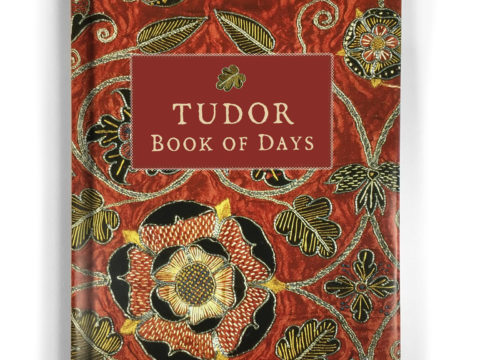Arbella Stuart: Life Story
Chapter 7 : Plots
There is no proof that Arbella had any view of attempting to take the throne from James, but not everyone was pleased with the Scottish incomer. In a curious, and hard to disentangle, conspiracy of 1603, Sir Walter Ralegh was accused of treason, with the enthronement of Arbella being his goal. The plan apparently, was to kidnap Arbella, force her to marry Thomas Grey, 15th Lord Grey of Wilton (a descendant of John of Gaunt), and for Grey to then take the throne. The plotters approached Karel van Ligne, Count of Arenburg, and resident ambassador of the Netherlandish rulers, the archdukes Albrecht and Isabella, with a request for 600,000 crowns to pay for an army. Given Ralegh’s strident Protestantism, this approach to Catholic monarchs seems extraordinary. One of Ralegh’s colleagues was Henry Brooke, 11th Lord Cobham, who sent Arbella details of the plot. She was unimpressed, thinking the plot foolish in the extreme, and immediately passed on the information to Sir Robert Cecil. This action would not only undermine the plot, but also make Arbella’s innocence clear. Ralegh was publicly tried in the Great Hall at Winchester. Arbella appeared, leaning on the arm of Charles Howard, Earl of Nottingham, who announced that ‘[t]he lady doth protest here upon her salvation that she never dealt in any of those things (i.e. any plots against James) and so she willed [him] to tell the court. Arbella’s biographer, Sarah Gristwood, questions this presentation of Arbella as entirely innocent, citing evidence that only came to light in the 1990s that Arbella was more closely involved than previously thought. Gristwood suggests that Arbella’s complicity was overlooked, in return for her providing evidence against Ralegh (whom James loathed) and Cobham.
Amongst the many extant letters Arbella wrote are some which date from this period, and describe court life. The king was apparently obsessed with ‘everlasting hunting’, whilst Queen Anne was courteous and warm. Arbella was appointed as carver to the queen – a prestigious post, but she wrote to that she had been so unhandy in her attempts to carve the royal dinner that Anne had taken to eating in private. Presumably, this was in the nature of a joke, as she added that Anne had quickly told her that her decision was not the result of Arbella’s failures. Nevertheless, Arbella did not always admire the queen, complaining to Gilbert that the court ladies wasted their time in children’s games, and she was aghast at the morals of ladies such as Penelope Devereux, Lady Rich, who was openly the mistress of Lord Mountjoy.
As an indication of her closeness to the royal couple, in 1605 Arbella was chosen as godmother to their daughter, Princess Mary, and was in correspondence with Prince Henry Frederick. She also attended the extravagant entertainment of Queen Anne’s brother, Christian IV of Denmark. After the king had departed, Prince Henry wrote to Arbella, begging her to release a musician from her service, whom Christian had admired, and send him to Denmark. Arbella, keen to improve the pool of possible patrons, wrote regularly to Christian and his wife, Anna-Catherine of Brandenburg,
Arbella either did not bear a grudge against Bess, or was so conditioned by her upbringing to believe that her role was to advance her family if possible, that she soon busied herself with trying to effect a reconciliation between Bess and Gilbert, who had once been close, but had quarrelled. She also tried to patch up the quarrel between Gilbert and Henry Cavendish, and petitioned for a barony for another Cavendish brother, William, who was Bess’s favourite and heir. This was followed up by a visit in 1605, when Bess was ill. Arbella arrived, bringing a letter from the king, asking Bess to extend hospitality to her granddaughter. Bess, however, entertained the deepest suspicions of Arbella’s motives and wrote to James saying that Arbella had done all she could to get away from Bess, and was probably now only sniffing around to have her inheritance restored. She felt she had done enough for her ungrateful granddaughter, and would do no more. This was not an altogether unreasonable statement, as during the 1590s Bess had made various financial arrangements, including paying the dowry that Arbella’s mother should have had, to benefit Arbella. She unbent enough to give Arbella a gold cup and £300, most of which probably went on sweeteners to achieve Cavendish’s barony. Bess died in 1608, leaving Arbella £1000, along with all of her own pearls and jewels not otherwise bequeathed. A handsome sum for a gentleman’s daughter, but nothing approaching the amount that Arbella might have inherited had she and Bess remained on good terms. Nevertheless, Arbella knew her duty, and travelled to Hardwick to, although the funeral did not take place for three months, so she did not wait. She paid a visit to the Shrewsburys at Sheffield before returning to London.
